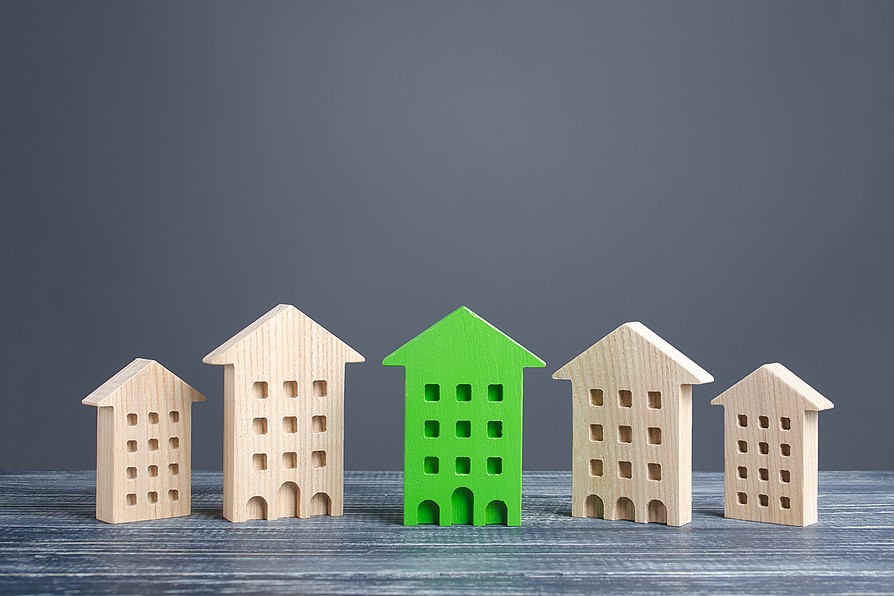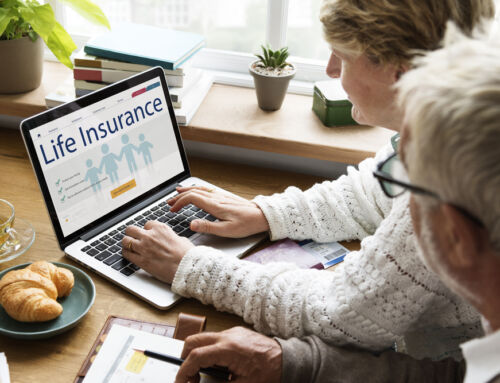We’ve written before about the ever-growing demand for “green” retirement communities — 55-plus communities that put a focus on planet-friendly design and practices. It is clear that the senior living industry must find ways to develop the “green” housing options that today’s seniors are clamoring for. Increasingly, the evidence shows that green senior living communities are not only good for the environment and for business — they are good for seniors’ overall health.
>> Related: “Green” Senior Living Communities: Good for the Environment and Residents
LEED-ing the way on green building practices
Based on consumer demand, as well as regulatory stipulations, green building materials and techniques continue to take the construction industry by storm. Many of today’s retirees are eager to find a senior living community that utilizes these environmentally conscious standards.
Since 1998, the Leadership in Energy and Environmental Design (LEED) program has made it simpler to identify Earth-friendly buildings. LEED enables builders or businesses to seek a “green rating” and certification for their construction projects, whether it be a residential, commercial, or mixed-use project.
The U.S. Green Building Council explains: “Available for virtually all building types, LEED certification provides a framework for healthy, highly efficient, and cost-saving green buildings, which offer environmental, social, and governance benefits.” In short, LEED standards result in buildings that are better for people, business, and the environment.
- People: LEED emphasizes the benefits of green building practices on public health, such as reducing exposure to toxic chemicals commonly found in some traditional building materials.
- Business: Not only are LEED-certified buildings a proven asset for investors, they also are less expensive to operate and fetch higher prices at resale.
- Environment: LEED buildings create less waste and use less water and energy throughout their design, build, and operation, reducing environmental impact in the short- and long-term.
A search of the LEED certification database will give you an idea of how many (or rather, how few) 55-plus communities have achieved LEED certification. You’ll find approximately 60 total results for “senior,” “senior living,” “senior apartment,” or “senior village” in the United States, as well as just five total results for “retirement village” or “retirement community.”
Green buildings may benefit seniors’ overall health
It’s no wonder more and more retirees are proactively seeking out LEED-certified senior living options. Beyond the mission and vision of the LEED program, scientists also have found a number of quantifiable health benefits to living and working in these green buildings, some of which may be particularly impactful for seniors’ wellness.
For example, a 2017 study conducted by researchers at Harvard’s T. H. Chan School of Public Health found a multitude of health advantages for people who work in high-performing green-certified buildings, such as:
- 4% higher cognitive test scores
- 4% higher sleep quality scores
- 30% fewer symptoms in general
The researchers also found that, “CO2, VOCs [volatile organic compounds], and ventilation rate all had significant, independent impacts on cognitive function.” One might extrapolate that similar benefits could be enjoyed by those living in green buildings as well.
For older people, who may naturally be at higher risk of cognitive issues or sleep disturbances simply because of their age, the health and wellness improvements associated with green buildings could make a substantial difference in their quality of life.
Green retirement communities mean cost-savings
In addition to the health benefits, green building initiatives can have a positive impact on the bottom line of a 55-plus community as well. Reducing waste and lowering energy and water usage, in particular, can make green buildings more profitable than a similarly sized but less-efficient community.
For instance, at 324,559 square feet, Hilltop Reserve in Denver, Colorado is one of the nation’s largest continuing care retirement communities (CCRC or life plan community). It was designated a LEED Gold level building in 2022 — the first senior living community in that state to receive that accolade.
The Hilltop Reserve project saw cost-savings during the building process through waste reduction efforts and locally sourced or recycled building materials. It will enjoy savings to its bottom line for years to come as well, thanks to the use of highly efficient building materials and a water-conserving landscape design. The expansive building also has a rooftop covered with photovoltaic solar panels, which can generate enough electricity for 60 single-family homes each year.
>> Related: The Environmentally Sustainable CCRC of the Future
More savings from going green
But the savings from green building initiatives aren’t only for new construction. There are plenty of ways existing 55 communities can see cost-savings through sustainability efforts too.
For instance, many Brookdale Senior Living communities participate in the EPA’s ENERGY STAR program, yielding millions in cost savings for the organization. Earth-friendly projects have included converting residential units’ appliances to more efficient models, utilizing high-efficiency water fixtures, and installing more than 48,000 energy-saving occupancy sensors across the system.
Green senior living communities also can benefit from substantial tax savings. According to the EPA’s ENERGY STAR website, for upgrades completed on or before December 31, 2022, “A tax deduction of up to $1.80 per square foot is available to owners or designers of commercial buildings or systems that demonstrate a 50% reduction in energy usage … Partial deductions of up to $.60 per square foot can be taken for qualifying measures.” (Of note, additional savings on eco-friendly construction and building improvements will be available through the Inflation Reduction Act, with more details to come.)
Taking better care of Mother Earth
So, what are these green buildings actually doing to help save energy and protect the environment? Here are a few of the Earth-friendly design and building practices being utilized:
- Stormwater capture, water-efficient irrigation systems, and water-conserving landscaping
- Use of recycled and/or locally sourced building materials
- ENERGY STAR roof shingles and appliances
- A well-insulated, air-tight building envelope with performance testing
- High-efficiency gas furnaces
- Tankless gas water heaters and water-saving low-flow plumbing fixtures
- Energy-efficient windows and doors
- High-efficiency and LED lighting fixtures
- Low-VOC paints and materials
- Electric car charger stations and/or compatible outlets in units’ garages
- Communal green spaces as well as facilitating walkability (both of which are proven to benefit older people’s health!)
Once these green 55-plus communities are inhabited, the opportunities for energy-saving and sustainability practices continue. To reduce their carbon footprint, some retirement communities have launched environmentally friendly initiatives such as:
- Menus that incorporate less meat and dairy, and more locally grown produce, both of which can have health benefits for residents
- Recycling and composting programs
- Community gardens, which yield healthy foods and sustain pollinators, and also give residents an enjoyable hobby
- Ride-sharing programs
- Encouraging outdoor activities, which require less energy usage but also get residents moving, socializing, and soaking in some natural vitamin D from the sun
>> Related: Cultivating Community: How One CCRC Is Tackling the Food Desert Issue
Tapping the green retirement community market
The advantages of constructing and living in green buildings are becoming clearer each day. Green retirement communities can see substantial cost-savings in both the long and short term, plus their residents also can experience tangible benefits from healthier building materials and health-conscious design.
The desire for green retirement communities is only going to grow as more environmentally aware people reach retirement age. But even with plenty of demand, it will be incumbent on the senior living industry to communicate these eco-friendly, cost-saving, wellness-supporting benefits as part of their marketing messaging. And, ideally, 55-plus communities also will find ways to pass these savings along to their residents.

FREE Detailed Profile Reports on CCRCs/Life Plan Communities
Search Communities






